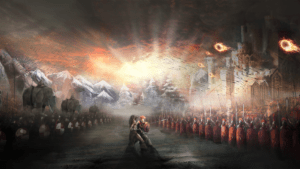Introduction
Continuous protests and rioting across the nation have prompted many to reconsider the foundations of American civilization while examining interracial relations among the American populace. Unfortunately, mainstream media outlets and political activists appear to be exacerbating racial tensions, encouraging hostilities, and unnecessarily polarizing the American population. Accordingly, many well-intentioned people are actively seeking guidance from diversity trainers and popular anti-racism resources, attempting to overcome racial barriers and promote multiracial relationships. Consequently, White Fragility has become one of the most prevalent anti-racism books in America,1 making it increasingly likely that your friend, pastor, teacher, or boss will either recommend White Fragility or assign it as required reading. Nevertheless, Robin DiAngelo’s intellectual dishonesty, poor scholarship, and racist worldview ultimately stifle meaningful conversation, eroding the possibility of significant multiethnic relationships within America’s complex cultural landscape. While brevity precludes exhaustive examination, this critique will exhibit fundamental flaws in White Fragility, demonstrating why one should vehemently discard DiAngelo’s contentions.
Defining Terms and Reimagining Racism
Before conducting an examination or engaging in meaningful discourse, it is vital to define the utilized terminology. Unfortunately, our understanding of race and ethnicity is murky, and scholars debate the potential objective criteria that could categorize people into particular classifications.2 Therefore, it seems ethnicity is best described as the subjective identity of a subpopulation, typically based upon common ancestry, cultural attachments, past linguistic heritage, religious affiliations, claimed kinship, or physical traits.3 Although physical characteristics may be a factor in ethnic identification, ethnicity appears to transcend such aspects.
Conversely, race refers to the classification of a subpopulation, typically based upon superficial biological characteristics or physical phenotypes (e.g., skin color, eye shape, hair texture, and bone structure), but may potentially include genetic clustering and behavioral phenotypes also.4 Although scholars contend that using racial classifications can provide statistically significant data in medicine, and demographic information can help sociologists identify useful trends/corollaries, the groupings themselves are arbitrary, causing debate over which categorizations ought to be recognized. According to the US Census Bureau, race assignments fall into the following five groups: White, Black or African American, American Indian or Alaska Native, Asian, and Native Hawaiian or Pacific Islander.5 Interestingly, this model classifies anyone from Europe, the Middle East, or North Africa, as white, indicating less emphasis on physical phenotypes than national/sociocultural heritage.
Since racial classifications are generally concerned with superficial biological characteristics, it is unsurprising that our culture historically defines racism as believing race is the primary determinant of human traits and capacities and that racial differences produce an inherent superiority of a particular race.6 Similarly, racial prejudice is an irrational attitude of hostility directed against an individual, a group, a race, or their supposed characteristics. Interestingly, racism and racial prejudice appear to be aspects of subjective perspective, rather than objective actions, as both definitions speak toward the internal mindset of an individual. Nevertheless, one’s acceptance of such anthropological views will likely manifest in unjustifiable acts of discrimination against particular racial/ethnic groups. Understanding that people bear God’s image, we recognize the intrinsic value of humans, acknowledging them as deserving of dignity and respect. Accordingly, the Christian views racism as more than just a detriment to social cohesion or human flourishing, we accurately identify racism, notions of racial supremacy, and overt acts of racial discrimination, as great moral evils.
However, DiAngelo rejects the classic definition of racism,7 insisting that any inequality between people of differing races amounts to inequity produced by systemic racism.8 Echoing the contentions of Ibram Kendi, DiAngelo emphasizes this notion, writing, “if we truly believe that all humans are equal, then disparity in condition can only be the result of systemic discrimination.”9 This simple sentence contains multiple fallacies which ought to dissuade readers from accepting DiAngelo’s redefinition of racism. Mainly, the sentence equivocates the term equal. Saying, “all people are equal,” is for someone to make a value or qualitative statement, not an identity or quantitative declaration. It seems obvious that two people can be equal in moral value or worth, without maintaining the same material property, political status, or physical capabilities. Similarly, within a political context, a country might legislate equality of opportunity, without guaranteeing equality of outcome. In other words, if a society celebrates diversity, it fundamentally acknowledges differences. Furthermore, it is logically impossible for two non-identical objects (i.e., people) to be equal, as inequalities always exist.10 Besides equivocating terms, this philosophy introduces a false dichotomy by eliminating any alternate explanations for the inequalities observed between people, while excluding relevant consideration of inequality among people of the same race.
Additionally, while DiAngelo acknowledges individual people exhibit racial prejudices and discriminatory actions, only institutional structures (e.g., a government) can engage in racism.11 Consequently, racism originates from the racial majority maintaining legislative authority and institutional control, thereby rendering it impossible for any member of the racial majority to be a victim of racism.12 Redefining racism in terms of oppressive structures seems to underscore DiAngelo’s political and ideological agenda, while simultaneously forcing readers to view every person, society, and establishment in racial terms—thereby precariously elevating race to the ultimate benchmark of identity.
Expecting her readers to accept these characterizations blindly, DiAngelo does not attempt to identify flaws with the classic understanding of racial terminology, nor does she strive to justify her reimagining of racism. Since DiAngelo’s assertions are not obviously true and are discernably fallacious in their construction, there is no reason for the reader to accept them. Furthermore, since DiAngelo’s skewed racial terminology provides the underpinnings for White Fragility, we are rationally justified in dismissing the central contentions without further consideration. Nevertheless, the next section will continue to examine fundamental flaws in White Fragility, demonstrating how DiAngelo’s racist worldview profoundly limits her ability to conduct accurate sociological analysis and why adopting a similar ideology will likely increase racial tensions, rather than alleviate them.
- As of the date of this publication, White Fragility is first on the New York Times bestsellers list (and has been on the list for 97 weeks), is 13th on the Barnes & Noble bestsellers list, and is third on the Amazon bestsellers list. Cf. “Paperback Nonfiction,” The New York Times, accessed July 19, 2929, https://www.nytimes.com/books/best-sellers/paperback-nonfiction/; “Amazon Best Sellers,” Amazon.com, accessed July 19, 2020, https://www.amazon.com/best-sellers-books-Amazon/zgbs/books; and “B&N Top 100: Book Bestsellers,” BarnesAndNoble.com, accessed July 19, 2020, https://www.barnesandnoble.com/b/books/_/N-1fZ29Z8q8.
- Cf. Michael James and Adam Burgos, “Race,” Stanford Encyclopedia of Philosophy, accessed July 18, 2020, https://plato.stanford.edu/entries/race/.
- Stephen Cornell and Douglas Hartmann, Ethnicity and Race: Making Identities in a Changing World, Second Ed. (Thousand Oaks, CA: Pine Forge Press, 2007), 19-20; Michael James and Adam Burgos, “Race,” Stanford Encyclopedia of Philosophy, accessed July 18, 2020, https://plato.stanford.edu/entries/race/.
- Cornell and Hartmann, Ethnicity and Race, 21-24; Michael James and Adam Burgos, “Race,” Stanford Encyclopedia of Philosophy, accessed July 18, 2020, https://plato.stanford.edu/entries/race/.
- “About,” The United States Census Bureau, accessed July 19, 2020, https://www.census.gov/topics/population/race/about.html.
- Unless otherwise noted, standard definitions originate from the Merriam-Webster Dictionary, https://www.merriam-webster.com/.
- Robin DiAngelo, White Fragility (Boston, MA: Beacon Press, 2018), 4.
- Ibid., 10; 16-17; 22-23; 60.
- Ibid., 17.
- Stefan Gosepath, “Equality,” Stanford Encyclopedia of Philosophy, accessed July 18, 2020, https://plato.stanford.edu/entries/equality/.
- DiAngelo, White Fragility, 20; 83.
- Ibid., 20-24; 113.




